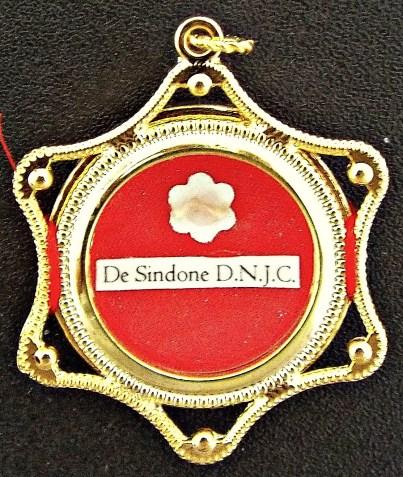
From the Burial Shroud
The Burial Shroud is a linen cloth of 14 feet 5 inches long by 3 feet 7 inches wide (4.4 x 1.1 meters). Imprinted on it is the negative image of the Body of Jesus Christ (Adler, 2002), which had resulted after the Savior was wrapped in it for His entombment after the Crucifixion.
The Shroud is known to have been in the possession of the Byzantine emperors until the Sack of Constantinople, which occurred in April 1204[1] (Poulle, 2009). Boniface I[2] and his chief counselor, Othon de la Roche,[3] took the Shroud from the Church of Saint Mary of Blachernae together with other relics and kept them in Athens (Anon., n. d.; Legrand, 1982; Piana, 2014; Rinaldi, 1983; Villehardouin, 2007). But after that no mention of it has been reliably documented for another two centuries.
The knight, Geoffroy I de Charny,[4] and his wife, Jeanne de Vergy,[5] were noted as the new owners of the Shroud in the 14th century, where it was preserved from 1360 to 1389 at Monfort-en-Auxois. Their great-granddaughter, Marguerite de Charny,[6] gave the Shroud to Louis I of the Casa di Savoia[7] in 1453 (Chevalier, 1900; Dubarle, 1993), in exchange for the castle of Varambon and monetary assets. The Savoyards in turn presented it to the Holy See in 1983.
The Shroud is woven in a 3-to-1 herringbone twill pattern made of flax fibrils. The negative image imprinted on it has been described as that of
A front and back view of a naked man with his hands folded across his groin. The two views are aligned along the midplane of the body and point in opposite directions. The front and back views of the head nearly meet at the middle of the cloth (ibid.).
The burial cloth of Christ can be found enclosed in a bullet-proof glass case at the Cappella della Sacra Sindone in Turin, Italy. This chapel had been built in the 17th century by Carlo Emmanuele II[8] to house the sacred relic.
Above is a photograph of a single thread from the Shroud in a sealed reliquary that comes from the Augustinians. A limited number of relics of the Shroud had been distributed to Catholic bishops around the world after a drop of molten silver from a fire had damaged a small part of it in 1532, while at the Sainte Chapelle in Chambéry,[9] France (Cruz, 1984).
———-
[1] The culmination of the Fourth Crusade, which is considered a major victory and turning point in medieval history.
[2] Marchese di Monferrato and King of Thessaloniki. Boniface was one of the knight-commanders of the Fourth Crusade.
[3] Baron of Ray-sur-Saõne and the first Frankish Lord of Athens.
[4] Lord of Lirey and Savoisy.
[5] A fifth-generation descendant of Othon de la Roche.
[6] de Charny became Madame de la Roche in 1418 after having married Humbert of Villersexel, Count de la Roche.
[7] The House of Savoy, a royal family that was established in 1003 at the historical region of the northwest Alps northwest of Italy. The Savoyards ruled Italy from 1861 to 1946 (Ginsborg, 2003).
[8] The Duke of Savoy.
[9] Chambéry was the capital of the Savoy region at the time. After the fire, Emmanuele Filiberto, the current Duke of Savoy, ordered that the Shroud be translated to Turin where it has remained since 1578. The coffer in which it traveled can also be seen (Piana, 2014).

